
Critical and Creative Thinking The Theoretical Interpretation of Spacetime/motion

Collections of Books from Earth/matriX
By
Charles William Johnson
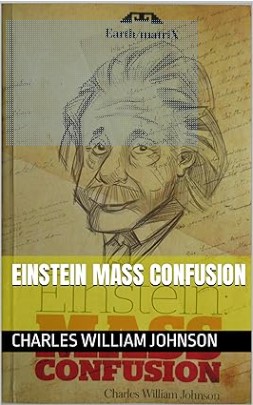 |
EINSTEIN: MASS CONFUSION Read how the implicit formula designed into Einstein's famous equation predetermines the numerical results obtained are generally confusing or redundant. The confusion is clarified when using Planck mass and Planck energy in the equation. Below is a brief excerpt of this essay, but it is best to read the entire line of reasoning behind the distinction of Einstein's formula and Einstein's equation. They are in fact two different aspects of the same numerical values. The former has to due with a rigidity in the design of the E-term, energy, and the latter emphasizes the behavior of the numerical values in the relation of equivalency.
|
||||
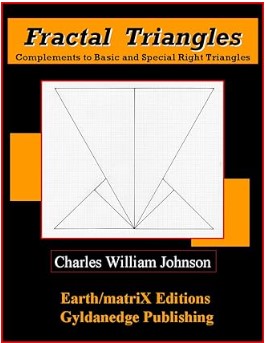 |
Fractal Triangles: Complements to Basic and Special Right Triangles (English Edition) Edición Kindle Have you ever wondered where the basic and special right triangles fit into spacetime? The basic and special right triangles join together with the fractal triangles to complete the circle of life. Discover the new series of right triangles that lies beyond the basic and special triangles. This book presents an infinite series of fractal triangles that complement the well-known basic and special right triangles. The fractal triangles illustrated in this book are presented for the first time in extended and minute detail. Discover the new series of triangles.
|
||||
 |
THE PHYSICS CHALLENGE The physics paradigm today is based mainly upon the concept of c-square, the squaring of the speed of light in a vacuum. Numerous fundamental physical and chemical constants provided in the physics literature [CODATA] reflect numerical values based upon powers of c, the speed of light in vacuo. The speed of light in a vacuum is determined to represent the upper limit of movement of mass|energy by physicists. Yet, scientists carry this numerical value to higher powers of c, which have no material existence. The speed of light in a vacuum is employed in various fundamental physical constants. Generally, these different ideas in today’s physics paradigm are held without reservation among physicists. In fact, any critique of the physics paradigm is generally ignored or denied without explanation. In the author’s view, by defending the physics paradigm through denial, physics runs the risk of becoming in some regards a pseudoscience.
|
||||
 |
CODATA, PLANCK CONSTANTS, ERRORS AND OMISSIONS The author derives the Planck constants as of the fundamental physical constants, instead of as of the traditional symbolic formulae given in the CODATA. The implied numerical values that are generally omitted in the science literature and which serve as a basis for deriving the Planck constants are identified in detail in their basic math. As of the analysis of the implied Planck values, errors and omissions of the CODATA Planck values are identified and treated extensively. The Planck constants are reverse engineered in order to employ the fundamental physical constants as their computational foundation. Various Earth/matriX Tables of the Planck Constants Based on the Fundamental Physical Constants are presented for the first time, illustrating how the fundamental physical constants serve as the foundation to the Planck constants.
|
||||
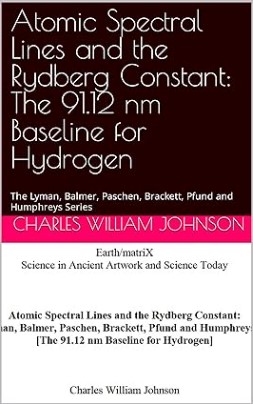 |
Atomic Spectral Lines and the Rydberg Constant: The 91.12 nm Baseline for Hydrogen: The Lyman, Balmer, Paschen, Brackett, Pfund and Humphreys The author examines the theoretical posits and computational nature of the Rydberg Constant in relation to the spectral lines of hydrogen. A critique is offered regarding the use of the 1.09737316 fractal constant, and a proposal in made to use the 91.12 nm baseline of the first level/orbital value. The reasoning behind the Rydberg equations is questioned, as well as alternative computations are discussed. A critique is made regarding whether the Rydberg Constant reflects spacetime coordinates and matter-energy events. The general concept of physical and chemical constants is also examined. First edition 2008. 28 pages.
|
||||
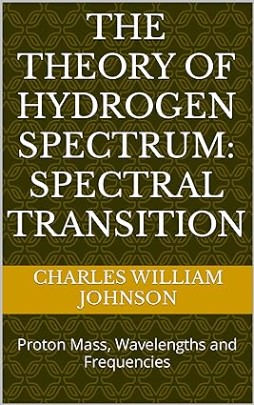 |
The Theory of Hydrogen Spectrum: Spectral Transition: Proton Mass, Wavelengths and Frequencies After posting the critique of Einstein’s formula about the conversion of massenergy on my web-site in December, 2011, I decided to consider the hydrogen spectrum again. Then an essay on the subject surfaced within my computer, one that I had forgotten that I had even written back in 2008. So, I finally published this essay as well about the Rydberg constant [1.0973731568527]. Its title: Atomic Spectral Lines and the Rydberg Constant: the Lyman, Balmer, Paschen, Brackett, Pfund and Humphreys Series (The 91.12 nm Baseline for Hydrogen) Numbers are important in physics. Recently, I looked at Einstein’s formula, E = mc-square, and realized that when Planck energy [1.9561] and Planck mass [2.17644] are used for the terms in that formula, the equation is a manipulation of powers of c, the speed of light in vacuo: where energy is c to the 9th power; mass is c to the 7th power, and c is c to the second power (squared) ---as powers are added in the equation . Imagine that Planck energy (E) and Planck mass (m) are simply fractal multiple expressions of c (the speed of light in vacuo) to the 9th and 7th powers. This line of reasoning carries over into the study of spectral lines. First edition 2011. 42 pages.
|
||||
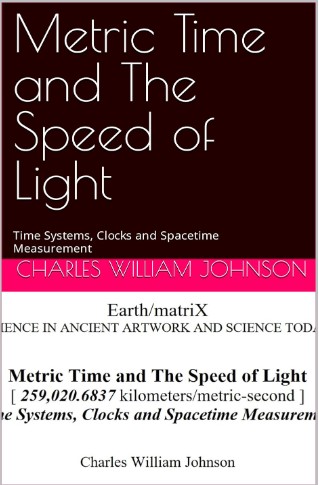 |
Metric Time and The Speed of Light: Time Systems, Clocks and Spacetime Measurement Metric time is the expression of unitary time for time reckoning on Earth. The conventional 24-hour time system employed today is actually an alternative method of measuring time and telling time. This essay explains the difference between metric time and alternative time systems, such as the 24- hour conventional time system employed today. The conventional 24-hour time system is based on the Earth’s rotation as is the proposed metric time system. Efforts to overcome these systems by using the number of pulses in an atom of Cesium-133 is discussed regarding methodology and consequences for the measurement of the speed of light. First edition 2009. 25 pages.
|
||||
|
EVENTPOINT COSMOGEOGRAPHY Eventpoint Cosmogeography, a new study, opens up a distinct line of inquiry into the geography of the Earth. Charles William Johnson, from Earth/matriX, Science Today, questions the theory of continental drift by examining the distances between geographical extreme points and selected cosmogeographical event points. The translation and centrosymmetries of geographical coordinate points suggest the fact that the continents undergo movement, but that they have not drifted randomly on the face of the Earth for the past 250 million years as proposed by Alfred Wegener nearly a century ago. The symmetry between extremepoints and eventpoints illustrated in this study suggests that continental drift theory must be reconsidered, possibly abandoned.
|
|||||
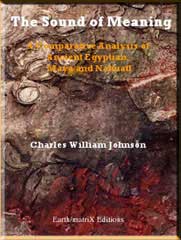  |
THE SOUND OF MEANING: COMPARATIVE LINGUISTICS In the book Sounds, Symbols, and Meaning: Ancient Egyptian, Nahuatl and Maya, we examine the possible linguistic correspondences among these languages. Interestingly enough, one can identify ancient Egyptian in innumerable words of the Nahuatl language simply by dropping the letter "l" in the latter. Or, one may add the letter "l" to many ancient Egyptian words, and the similarity with Nahuatl becomes striking. Many words between ancient Egyptian and these Mesoamerican languages share a linguistic correspondence on three levels: phonemes, morphemes and even the symbolic or graphic (glyphs and hieroglyphs) level. We discuss the possibility of there having existed a Mesoamerican-Kemi proto-lingua possibly in the past, before these language groups were formed.
|
||||
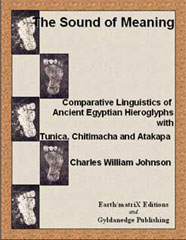  |
THE SOUND OF MEANING II: COMPARATIVE LINGUISTIC OF ANCIENT EGYPTIAN HIEROGLYPHS WITH TUNICA, CHITIMACHA AND ATAKAPA The Native American languages of Louisiana, Tunica, Chitimacha and Atakapa are compared to the ancient Egyptian hieroglyphs. Linguistic correspondences among these languages establish the possibility of contact at some point in ancient history among these cultures. This volume complements a previous comparative study between ancient Egyptian and the Maya language system as well as the language of the Aztecs, Nahuatl. After researching the linguistic correspondences between ancient Egyptian
and the Maya and Nahuatl language systems, my curiosity rose in regard to a
possible linguistic correspondence between ancient Egyptian and some of the
North American Indian languages. I wanted to consider Native Indian
languages of peoples who built mounds and temples in North America. And, I
mainly wanted to study those related to the area of Louisiana, since I had also
studied a possible relationship between the Giza pyramid complex and some of
the earth mounds in Louisiana. As I began my search for dictionaries and
glossaries of the Native American languages in Louisiana. In this study, I present linguistic correspondences between the ancient Egyptian hieroglyphs and three of the Native Indian
languages of Louisiana, Tunica, Chitimacha and Atakapa.
|
||||

|
THE TAINO LANGUAGE AND ANCIENT EGYPTIAN No one knows how many Taino lived on the Caribbean Islands upon the arrival of the Spaniards in 1492. Estimates run between 100,000 to 1,000,000. But, everyone knows that the number of Taino left standing after the Spanish Conquest represented an infinite percent of that original population. In spite of that historical tragedy, one of many during and following the Spanish Conquest, the Taino language remains among us. The Spaniards adopted numerous Taino words into their own language, as will be seen from the glossary in this study (cacique, colibrí, hamaca, iguana, jaiba, macana, tiburón, etc.). That type of borrowing the language of a conquered peoples is not the subject of this study however. I am concernd with the possible linguistic correspondence between the Taino language (at least what is known of it today), and the ancient Egyptian hieroglyphs.
|
||||
|
|
ANCIENT EGYPTIAN AND PUREPECHA The author examines the linguistic correspondence between the ancient Egyptian hieroglyphs and the language generally known as Purépecha of Mexico. The origins of the Purépecha language and its people are not known by scholars. Some students attribute the origins of the Purépecha to the people of ancient Peru. In this comparative linguistic study, there exist numerous linguistic correspondences between the phonemes and morphemes of the Purépecha language with the ancient Egyptian hieroglyphs. Due to the extent of the cited linguistic correspondences Charles William Johnson (www.earthmatrix.com) suggests that some kind of contact possibly existed between the two referenced cultures prior to their known history. It is shown that the coincidence of correspondences concern words in Purépecha who initial phoneme is dropped and then Kemi word words appear. Linguistic correspondence, then, is based in this case on discernible patterns of word constructs. A similar pattern was noted in previous Earth/matrix studies regarding Nahuatl, where the omission of the letter “L” in Nahuatl produced word roots in ancient Kemi hieroglyphs. If the patterns of linguistic comparisons illustrated in this study are reflexive of contact between these two ancient peoples, then the historical record itself must be reconsidered.
|
||||
 |
PAKAL: THE ANCIENT ASTRONAUT In the book Pakal, the Ancient Astronaut, we explore the design elements of the Pakal sculpture found at Palenque, Mexico. We have analyzed and illustrated the design elements of the Pakal sculpture from the perspective of simple mechanics. We have given movement to the elements within the sculpture's image and in that manner see appear something that resembles a space craft. Obviously, such a rendering of the sculpture may be viewed critically, since from our knowledge about history, there is nothing in the historical record about the existence of spacecraft; at least, nothing specifically identified as such. However, in the visual rendering of Pakal's vehicle, a geometrical analysis seems to offer more of a solution to the enigma, than a semantic rendering of ancient texts.
|
||||
 |
The Great Scales: Osiris and Pakal In this essay, The Belief System of Osiris, I examine the apparent relation-ship that exists between ancient Egyptian hieroglyphs and the glyphs and design elements of the lid of the sarcophagus of Pakal (Palenque). The visual similarity of these symbolic elements from two distinct cultures may not be sufficient evidence to substantiate the idea that there was possibly contact between these two cultures. Nevertheless, by examining the sounds, symbols and meanings of the ancient Egyptian hieroglyphs and the Maya glyphs and images, one is able to conceptualize a tenable interpretation of ancient religious thought. It would appear that the two systems are complementary to one another, suggesting yet another possibility, that a third culture may have influenced both of these cultures in their beliefs. Each culture, that of the ancient Egyptians and that of the ancient Maya, are quite distinct and autonomous. The common characteristics that are examined in this study may require a reexamination of the predominant understanding of ancient history. First edition 2004. 83 pages.
|
||||
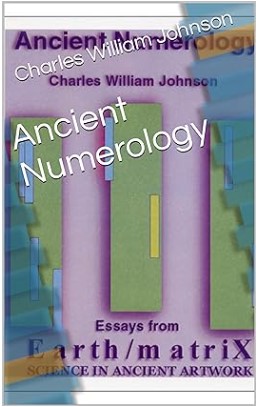 |
ANCIENT NUMEROLOGY In Ancient Numerology, we examine different historically significant numbers, possible methods of computation, and some of the interrelationships of these numbers and methods. From all appearances, the different ancient reckoning systems suggest the possibility that they may have come from a single system of reckoning. 110Pag.
|
||||
|
THE AZTEC CALENDAR: MATH AND DESIGN In the book The Aztec Calendar: Math and Design, Charles William Johnson examines the possible relationships between mathematics and geometry. The historically significant numbers may reflect progressions which in turn may be translated into geometrical figures and designs. No one knows for certain how the Aztec Calendar may have been read or interpreted. Its simbolic design is striking and has intrigued scholars for centuries. The Aztec Calendar: Math and Design explores the stone's elements and rings in relation to their spatial divisions in an attempt to discern a possible method of computation, using the historically significant numbers of the ancient reckoning system. The book promotes the existence of specific mathematical posits that the geometrical spatial division of the calendar's elements appear to obey.
|
|||||
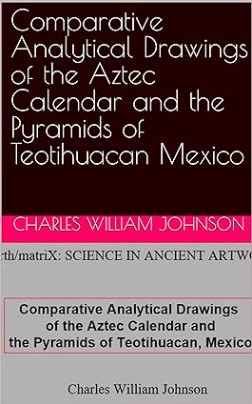 |
Comparative Analytical Drawings of the Aztec Calendar and the Pyramids of Teotihuacan Mexico Analyzes the coincidence of the outline of the concentric circles of the Aztec Calendar with the different outlines of the various monumental structures at the site of Teotihuacan,Mexico. Original Earth/matriX essay, first edition,2005. 18 pages.
|
||||
|
THE GOLDBACH CONJECTURE AND THE UNIVERSE OF PRIMES NUMBERS The Goldbach Conjecture and the Universe of Prime Numbers examines the even-sum tables of the natural numbers and prime numbers in proving the conjecture. The explanation of the inner workings of the Goldbach conjecture are rendered into simple math. Knowing how to add is all that is required. Profusely illustrated with easy-to-read math tables explaining how the sum of primes perform in relation to the conjecture.The author examines the Goldbach Conjecture, a 262 year-old conjecture. It is impossible to prove the Goldbach Conjecture in the manner in which the theorists of mathematics have been demanding. Instead of a resolution based on algebra, an explanation of the Goldbach Conjecture based on the numbers is required. In fact, this may be a simpler task than imagined until now.
|
|||||
|
|
|||||
|
PARTICLE MASS DIFFERENCE The book Particle Mass Difference was published in 2004, where I presented the idea of the difference between the proton and the neutron as a concept of measurement. In this book, I explain in detail the reasoning behind the concept of "differences" in ancient reckoning and in physics and chemistry.Most of the CODATA constants are given with reference to the constants and their ratios, and to a lesser degree as moments and anomalies. One does not find a list of the "differences" between any of the constants. The only difference that appears is that referred to as mass defect (2.388c fractal), whereby the sum of the masses in the nucleon is distinct to their individual masses. In 2013, the constant of the proton-neutron difference (2.3055c fractal) entered some of the handbooks on physics and chemistry.
|
|||||
|
ELEMENTAL TRIPLICITY: On the Neutronic Schemata of the Elements Elemental triplicity represents a grouping of different elements whose protonic and neutronic counts reflect the same/similar numbers reflecting a midpoint between two chosen elements, which defines a specific pattern of centro-symmetry. The middle element of the three elements chosen reflects the midpoint, or average of the two counts of the two extreme elements. Because the elements are typically not arranged according to the twenty-element baseline of the neutronic count, the relationships of elemental triplicity have never been visualized before, until now. The horizontal rows of eighteen elements on the conventional periodic table denies a visual rendering of the numbers of the elemental triplicities. The existence of groups of three ---or more--- elements with a pattern of centro-symmetry is populated throughout the elements, as illustrated in this book.
|
|||||
|
TEMPERATURE SCALES AND ANCIENT RECKONING Ancient reckoning numbers reflect a historically significant fractal number of 1.366. The relationship between the boiling and freezing points of water is also a fractal expression of a 1.366 number. Random coincidence? The author thinks not. Different thermodynamic temperature scales based on unit one are derived and presented in an effort to overcome the incomparable and difficult to manage numbers of the existing temperature scales. Also learn what the square root of three has to do with the temperature scales and the boiling/freezing points of water. By assigning either the boiling or freezing points of water the unit 1.0, the different scales become easily comparable, and the gradation scales become relevant for other measurements such as the chemical and physical constants of matter-energy.
|
|||||
The Schemata of the Periodic Table of the Elements The Schemata Periodic Table of the Elements presents a visual rendering of the different patterns established by the the elements. The atomic number of the elements sequence is listed in the schema. The schema distinguishes patterns of valence numbers, electronegativity, electron count, orbitals, shells, radioactivity, among other relationships. These patterns allow us to visualize the interrelationships among the elements, and serve as a means for remembering the structure of the table. Further, one cannot only remember the periodic table more easily, but actually reconstruct through the schematic design of the patterns of the elements.
|
|||||
Beyond the Periodic Table:
|
|||||
Beyond the Periodic Table |
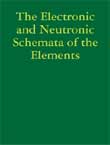
THE ELECTONIC AND NEUTRONIC SCHEMATA OF THE ELEMENTS
he Electronic and Neutronic Schemata of the Elements is a full-color book with over 125 color illustrations of the new periodic table. The schemata of the elements are presented in selected versions of the electronic and neutronic configurations of the elements. The schemata represent a distinct re-structuring of the conventional periodic table. Color coded patterns of centrosymmetry, translation and reflective symmetry produce teaching and research aids for high school and college students. The selected compilation of electronic and neutronic schemata in this book represent only a few of the thousands of schemata now being produced by the Earth/matriX project.

Comparative Analytical Drawings of the Aztec Calendar
This 45-page work combines photos, drawings, and schematics to examine the art and science of the Aztec Calendar and the Pyramids of Teotihuacan. Excerpt: "The case may be that the Aztec Calendar may have functioned as a periodic table of the elements. In order to explore such a possibility, we must first compare the symbolism within the day-glyph ring on the face of the Aztec Sun Stone, in relation to the elements of matter-energy, as we know them today. It would appear that the Aztec Calendar kept cosmological time of the Universe. Besides measuring the Cosmic cycles, the Aztec Calendar may measured the minute world of the elements and their atoms."
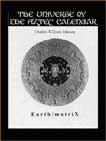
IMAGES OF THE AZTEC
CALENDAR
The high contrast images presented in this book isolate distinct elements
of the Aztec Calendar in an effort to bring out original views of the
distinct relationships within the calendar's design. The analytical
views reflect certain degrees relational to a circle and the ancient
reckoning numbers, while others emphasize the laws of geometry.
You may also purchase some eBooks
from Earth/matriX Editions.
information: charlesjohnson@earthmatrix.com
| Home | Books | Author |